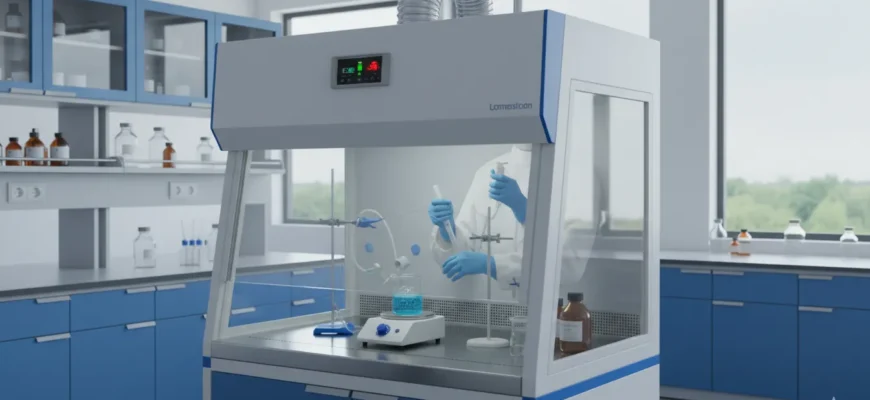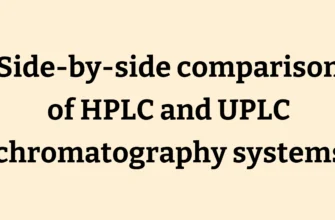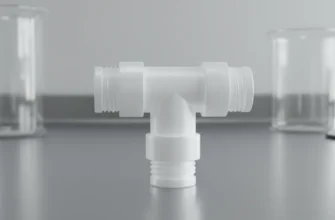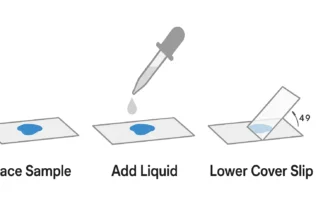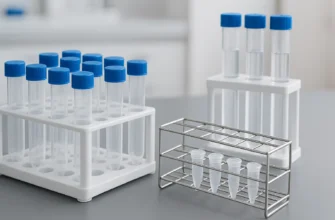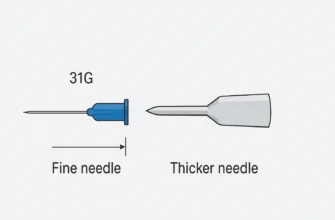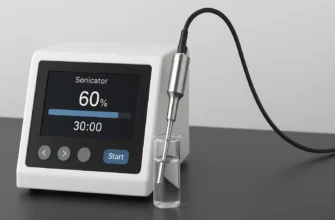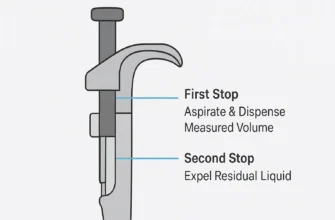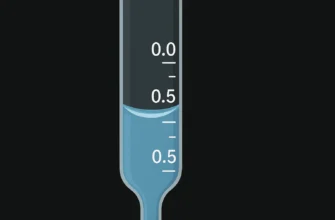Choosing the Right Benchtop Fume Hood for Your Lab: Fact-Check and Updated Guide
Key Highlights
A benchtop fume hood is essential for protecting lab personnel from hazardous fumes and vapors. The primary choice is between ducted fume hoods, which vent air outside, and ductless fume hoods, which filter and recirculate air. Your selection depends on the types of chemicals you handle, your lab’s layout, budget, and safety requirements. Construction materials like stainless steel directly impact a fume hood’s durability and chemical resistance. Understanding current safety standards and proper maintenance practices helps you choose the right fume hood for a safe and efficient workspace.
Introduction
Creating a safe environment in your laboratory is non-negotiable. Behind every scientific breakthrough is a workspace designed for precision and protection. Laboratory fume hoods are a critical piece of lab furniture, acting as the primary defense against harmful vapors and chemical exposure. In properly functioning fume hoods, only about 0.0001% to 0.001% of material released within the hood actually escapes into the laboratory. Choosing the right one can feel overwhelming, but it’s a vital step in ensuring your team can work safely and efficiently. This guide will walk you through the key considerations for selecting the perfect benchtop fume hood for your lab’s unique needs.
Understanding Benchtop Fume Hoods and Their Importance in Laboratories
A benchtop fume hood is a ventilated enclosure designed to sit on a countertop or work surface. Its main purpose is to protect lab personnel from inhaling hazardous chemicals by capturing and removing contaminated air. These benchtop hoods are fundamental to laboratory safety, providing a controlled area for handling volatile substances.
Making sure you have the right fume hood is crucial for preventing exposure to toxic fumes and aerosols. It provides an effective barrier between lab workers and chemical procedures being performed. To make the best choice, it’s helpful to understand their specific functions and the benefits they offer over other ventilation systems.
Key Functions and Applications in Laboratory Settings
The primary function of a chemical fume hood is to provide a safe work surface where procedures involving harmful fumes can be conducted. It effectively contains gases, vapors, and mists, preventing them from escaping into the laboratory environment. This containment is essential for maintaining air quality and protecting researchers.
Benchtop fume hoods are versatile and suited for a wide range of general lab applications. They are especially useful for procedures involving small to moderate quantities of materials with varying toxicity levels. When selecting a unit, you must consider your lab’s specific needs and the types of chemicals you will be using.
Common applications for benchtop fume hoods include:
-
General chemistry experiments
-
Handling volatile and toxic chemicals including flammable chemicals, formaldehyde, chloroform, and carcinogens
-
Procedures that generate odorous or hazardous fumes
-
Small-scale distillation processes
-
Acid digestion and sample preparation
-
Chemicals with National Fire Protection Association (NFPA) health rating of three to four
Main Benefits Over Other Fume Hood Types
One of the most significant advantages of benchtop fume hoods is their space-saving design. Unlike larger floor-mounted models, they can be placed directly on an existing countertop or on top of base cabinets, making them ideal for laboratories with limited space. This compact footprint allows for more flexibility in lab design and layout.
These hoods are also incredibly versatile, capable of handling a wide range of chemicals and applications. From general-purpose chemistry to more specialized tasks, a benchtop unit offers reliable protection. They are a practical choice for most standard laboratory setups that don’t require the large capacity of a walk-in hood.
Key benefits of benchtop models include:
-
Perfect for labs with limited space
-
Versatile for many general chemical procedures
-
Can be installed over storage base cabinets
-
More cost-effective than larger, specialized units
-
Available in both ducted and ductless configurations
Ducted vs. Ductless Benchtop Fume Hoods
When choosing a benchtop fume hood, you’ll encounter two main styles: ducted and ductless. Ducted fume hoods are connected to your building’s HVAC system and an external exhaust system. They pull contaminated air from the lab and safely vent it outside of the building, making them ideal for handling highly toxic or volatile chemicals.
In contrast, ductless fume hoods are self-contained units that use filters to clean the air before recirculating it back into the room. This design offers greater flexibility and easier installation. Examining the features of each type will help you decide which is better suited for your laboratory.
Features, Advantages, and Limitations of Each Type
A ducted hood offers the highest level of protection by completely removing hazardous fumes from the laboratory. This makes it the safest choice for working with highly toxic or corrosive substances. However, the installation is more complex and costly, as it requires connecting to ductwork and an external exhaust fan.
Ductless models provide flexibility since they don’t require any ductwork. You can place them almost anywhere in the lab and easily move them if needed. The main consideration for these units is the ongoing operating costs associated with filter replacement. Filters must be replaced periodically, and the frequency depends on the type and volume of chemicals used.
| Feature | Ducted Fume Hoods | Ductless Fume Hoods |
|---|---|---|
| Installation | Requires connection to external ductwork and exhaust system; more complex and costly | Simple setup; no ductwork needed, just a power source |
| Safety | Vents all contaminants outside, offering maximum protection for highly toxic chemicals | Filters contaminants and recirculates air; best for low-to-moderately hazardous substances |
| Mobility | Stationary and fixed in place once installed | Portable and can be easily relocated within the lab |
| Maintenance | Requires regular checks of ductwork and fan system | Requires frequent filter replacement every 6-24 months, adding to long-term costs |
| Environmental Impact | May release unfiltered contaminated air outside | Traps contaminants in filters for proper disposal |
Choosing the Best Style for Your Laboratory Needs
Making the right choice between a ducted and ductless fume hood is essential for creating a safe working environment. The decision ultimately depends on your lab’s specific needs, the nature of your work, and your facility’s infrastructure. If your work involves highly toxic chemicals, a ducted hood is the safest and most reliable option.
For labs that handle less hazardous materials or require more flexibility, a ductless model can be a practical and cost-effective solution. These are also great for educational settings or temporary workspaces where installing ductwork isn’t feasible. However, industry safety standards require completion of a detailed chemical assessment before implementation of ductless products.
To determine the best fit for your work environment, consider these factors:
-
Types of chemicals: Are they highly toxic, volatile, or odorous?
-
Volume of work: How frequently will the fume hood be used?
-
Lab infrastructure: Do you have existing ductwork, or is installation possible?
-
Budget: Factor in both initial installation and long-term operating costs
-
Chemical compatibility: Ensure proper filtration is available for your specific applications
Essential Materials Used in Benchtop Fume Hood Construction
The material used to construct a fume hood is just as important as its ventilation system. The durability and chemical resistance of the hood’s interior and exterior surfaces play a crucial role in its longevity and safety. Materials like powder-coated steel and stainless steel are common choices in laboratory furniture due to their robust properties.
Different types of fume hoods are built with specific materials to handle certain chemicals and applications. For example, a hood designed for perchloric acid requires highly corrosion-resistant materials with specific safety features. Understanding these material options will help you select a unit that can withstand the rigors of your lab work.
Common Material Options and Their Effect on Performance
The performance of a benchtop fume hood is directly affected by its construction materials. A material that is not compatible with the chemicals being used can degrade over time, compromising the safety and integrity of the unit. Steel is a popular choice for its strength, and a powder-coated finish adds a layer of chemical resistance.
For applications involving highly corrosive substances, stainless steel is often the preferred material for the liner and work surface. It offers superior resistance to a wide range of chemicals and is easy to clean. Other materials like aluminum may be used for the frame to provide a sturdy yet lightweight structure.
| Material | Key Properties | Best For |
|---|---|---|
| Powder-Coated Steel | Durable, good general chemical resistance, cost-effective | General purpose chemistry labs with moderate chemical use |
| Stainless Steel (Type 316) | Excellent corrosion resistance, high durability, easy to decontaminate, non-porous | Labs using highly corrosive acids, radioisotopes, or requiring sterile conditions |
| Polypropylene | Excellent chemical resistance, affordable, lightweight | Labs handling corrosive substances where cost is a concern |
| Epoxy Resin | Superior chemical resistance, high durability, non-porous surface | Demanding laboratory environments with varied chemical exposures |
| Kemglass (Fiberglass) | Good chemical and heat resistance, smooth finish | General chemical applications, educational labs |
| Phenolic Resin | High chemical resistance, durable, moisture resistant | Labs with a wide variety of chemical exposures |
Corrosion Resistance, Durability, and Chemical Compatibility
Ensuring your fume hood has high corrosion resistance is critical, especially when working with dangerous chemicals. The interior liner and work surface are constantly exposed to hazardous substances, and a material that can withstand this exposure without degrading is essential for long-term safety and performance. Chemical compatibility should be a top consideration.
Specialized fume hoods are built to handle specific, highly aggressive chemicals. For example, perchloric acid fume hoods feature seamless Type 316 stainless steel interior and a dedicated wash-down system to prevent the buildup of explosive perchlorates. Similarly, radioisotope hoods use Type 304 stainless steel with welded seams to allow for easy decontamination.
When choosing a fume hood, always verify its material compatibility with the chemicals you plan to use. Key factors to assess include:
-
The type and concentration of chemicals
-
The temperature of the procedures
-
The potential for spills or splashes
-
The need for easy cleaning and decontamination
-
Flame spread ratings (materials should have a flame spread index of 25 or less per NFPA standards)
Current Safety Standards and Performance Requirements
Understanding current safety standards is crucial for selecting and maintaining fume hoods. The ASHRAE 110-2016 standard provides comprehensive testing methods for laboratory fume hood performance. This standard includes three critical tests: face velocity measurement, flow visualization, and tracer gas containment testing.
Face Velocity Standards
Face velocity is the single most important measurement in fume hood technology. Current standards specify:
-
ASHRAE 110-2016: 80-120 fpm (0.4-0.6 m/s)
-
ANSI/AIHA Z9.5-2003: 80-100 fpm (0.4-0.5 m/s)
-
India IS 4209:2013: 0.5 m/s
Face velocity measurements must be taken using thermal anemometers with ±3% accuracy at multiple grid points across the hood face. For variable air volume (VAV) systems, testing occurs at 25%, 50%, and fully open sash positions.
Performance Testing Requirements
Modern fume hood testing follows rigorous protocols:
-
Face velocity measurement: Using thermal anemometers at multiple sampling points
-
Smoke visualization: Visual assessment of airflow patterns inside the hood
-
Tracer gas containment: Ultimate test using sulfur hexafluoride or equivalent with concentration limits of AM 0.05 PPM or better
Installation and Maintenance Requirements
Installation Guidelines
Proper installation is critical for fume hood performance:
Environmental Requirements:
-
Indoor use only
-
Altitudes up to 2,000 meters
-
20%-90% relative humidity
-
Temperature between 18°C-30°C (maintained within ±2°C range)
Location Requirements:
-
Minimum 1.0 m clearance from pedestrian routes
-
Minimum 3 m separation from opposing fume hoods
-
At least 30 cm clearance from obstructions on sides
-
For ductless hoods: minimum 30 cm clearance between highest point and ceiling
Maintenance and Filter Replacement
Regular maintenance is essential for safe operation:
Inspection Schedule:
-
Monthly inspections checking for corrosion, mechanical wear, and unusual noises
-
Weekly cleaning of sash glass, work surface, and accessible areas
-
Annual certification testing per ASHRAE 110 standards
Filter Replacement Schedule:
-
Primary filters: Every 3-6 months (monthly in heavily polluted environments)
-
HEPA filters: Every 12-24 months
-
Activated carbon filters: Every 6-24 months depending on usage
-
General recommendation: 12-18 months for most applications
Special Applications and Safety Considerations
Perchloric Acid Fume Hoods
Working with perchloric acid requires specialized equipment due to its highly oxidizing and explosive properties. All perchloric acid work must be conducted in specially designed perchloric acid fume hoods, regardless of concentration, contrary to some recent standard revisions.
Required Features:
-
Type 316 stainless steel interior with welded seams
-
Dedicated wash-down system with daily operation requirement
-
Individual exhaust system (not manifolded with other hoods)
-
Shatterproof glass sash
-
Warning labels: “FOR PERCHLORIC ACID WORK ONLY”
-
All utility controls located outside the hood
Safety Protocols:
-
Daily wash-down cycles or after each procedure
-
Regular testing for perchlorate buildup using methylene blue tests
-
Prohibition of organic materials in designated perchloric acid hoods
-
Specialized maintenance procedures with hazard assessment
Conclusion
Selecting the right benchtop fume hood requires careful consideration of multiple factors including chemical compatibility, safety standards, installation requirements, and long-term maintenance needs. Understanding the differences between ducted and ductless options, along with the materials used in their construction, will help you make an informed decision tailored to your specific laboratory requirements.
Current safety standards emphasize the importance of proper testing, installation, and maintenance. Regular face velocity monitoring, adherence to ASHRAE 110-2016 testing protocols, and appropriate filter replacement schedules are essential for maintaining safe laboratory conditions. For specialized applications like perchloric acid work, dedicated equipment with enhanced safety features is mandatory.
With the right fume hood selection and proper maintenance practices, you can significantly enhance workplace safety and compliance while maintaining productivity in your laboratory environment. If you need further assistance, consult with qualified professionals to ensure your specific needs are met according to current safety standards.
Frequently Asked Questions
What Safety Features Should I Look for in a Benchtop Fume Hood?
Look for key safety features including consistent airflow monitors with audio-visual alarms, durable and corrosion-resistant liners (preferably Type 316 stainless steel for demanding applications), and properly sized sash openings. Face velocity should be maintained between 80-120 fpm per ASHRAE standards. Advanced features like bypass systems and automatic sash positioning can enhance safety and energy efficiency.
Are Portable Benchtop Fume Hoods Effective for Handling Chemical Fumes?
Yes, portable ductless fume hoods can be effective for handling certain chemical fumes, especially in labs with limited space or installation constraints. However, their effectiveness depends critically on using the correct filter for the specific chemicals involved and maintaining proper replacement schedules. They require completion of a detailed chemical assessment before implementation and are best suited for low-to-moderately hazardous substances.
How Do I Maintain and Clean a Benchtop Fume Hood for Safe Operation?
Regular maintenance involves monthly inspections for corrosion and mechanical wear, weekly cleaning of all surfaces to prevent contamination, and annual certification testing. For ductless hoods, timely filter replacement every 6-24 months is crucial depending on usage. Monitor face velocity regularly using the built-in flow indicator, and ensure readings stay within the 80-120 fpm range. Always follow manufacturer guidelines and maintain detailed maintenance logs for compliance tracking.

